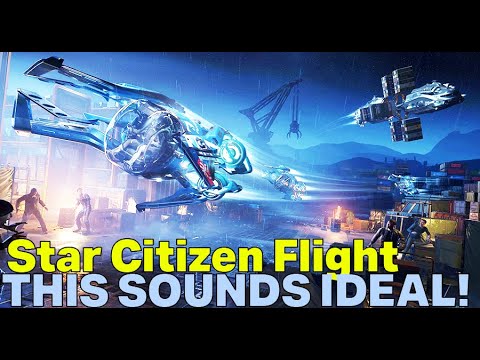The video details upcoming Star Citizen flight updates, including nuanced ship balance, improved flight mechanics with customizable IFCS controls, and a smoother quantum travel system featuring quantum boosting for mid-range travel. It also highlights significant atmospheric flight enhancements, realistic ship dynamics, and ongoing tuning efforts aimed at creating a more skill-based, immersive, and strategically diverse spaceflight experience.
Huge Info Dump - Star Citizen's Flight Changes, Control Surfaces, Quantum Boosting, Travel & Balance
In this detailed breakdown of recent Star Citizen flight updates, Ryan (aka Mac) covers the developers’ insights on ship flight mechanics, balance, and upcoming changes. Heavy fighters, often misunderstood, are designed to have lower maneuverability but greater durability and firepower compared to lighter classes. While currently underperforming, developers believe the issue lies more with the tuning of light and medium fighters rather than heavy fighters themselves. Balancing ships is complex, as each class affects the others, and future systems like Maelstrom (a physical damage system) and armor will further define the roles and effectiveness of different ship types.
The flight model changes will provide more nuanced control, with the F8 Hornet and other ships receiving adjustments to better reflect their intended roles. Importantly, player skill and ship customization will significantly impact performance, emphasizing that no ship is inherently “best” but rather suits different playstyles and abilities. The new flight model will include extensive IFCS (Intelligent Flight Control System) customization, allowing players to toggle safety features on or off, offering a more accessible experience for newcomers and a skill-based challenge for veterans who want full manual control.
Quantum travel is being overhauled to eliminate the clunky nav mode in favor of a smoother system involving three speeds: SEM (Standard Emergency Mode) for combat, quantum travel for long-distance jumps, and quantum boosting for mid-range travel within a 300 km range. This change aims to make navigation more fluid and intuitive, with quantum boosting replacing some existing travel modes. The spaceflight model will feature realistic velocity dynamics where forward speed exceeds lateral or backward speed, enhancing the visceral feel of dogfights and space maneuvers.
Atmospheric flight is also receiving significant improvements, including realistic control surfaces worked on by a licensed pilot, enabling ships to glide even without engine power. This will allow emergency landings and stealth approaches, improving gameplay depth. Additionally, the new flight model will prevent capital ships from unrealistically hovering and shooting downward, with thrust-to-weight ratios and cargo load affecting takeoff ability. Weather effects are already impacting flight in patch 4.2, with expectations of further evolution to enhance immersion.
Other topics discussed include the ongoing tuning of industrial ship turrets, missile and torpedo mechanics, and the future of ground vehicles, which currently lack priority but are expected to gain more purpose and control options over time. Ryan expresses excitement for these changes, especially the atmospheric flight improvements and IFCS customization, anticipating a more skill-based and immersive flight experience in Star Citizen. He encourages players to wait for the new flight model before investing too much time in current ship mechanics, as the upcoming updates will fundamentally reshape gameplay.
